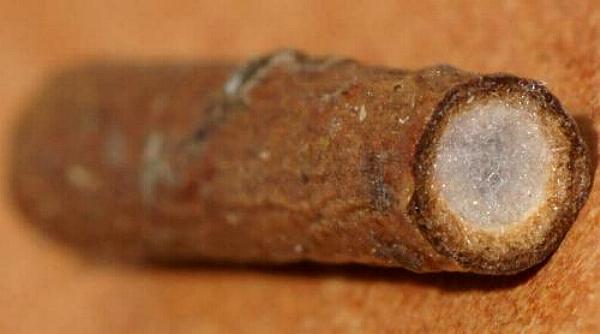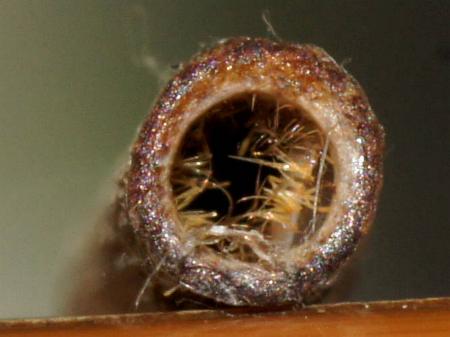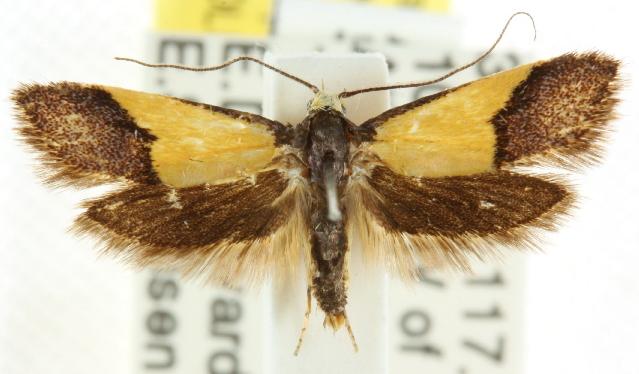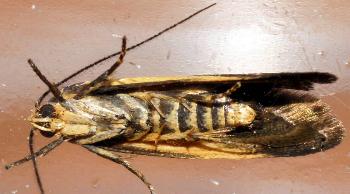
| (previously known as Ocystola callista) WINGIA GROUP OECOPHORINAE, OECOPHORIDAE, GELECHIOIDEA | (donherbisonevans@yahoo.com) and Stella Crossley |

(Photo: courtesy of
Ken Harris, Genoa Falls, Victoria)

| (previously known as Ocystola callista) WINGIA GROUP OECOPHORINAE, OECOPHORIDAE, GELECHIOIDEA | (donherbisonevans@yahoo.com) and Stella Crossley |

(Photo: courtesy of
Ken Harris, Genoa Falls, Victoria)
The Caterpillars of this species live in a hollowed out twig which they carry around. The caterpillars probably feed on various species of

The caterpillars pupate in their twig, anchoring it to a branch or convenient object.

The adult moths have a yellow head, a brown thorax, and forewings that have a yellow basal half, a brown marginal half, and a brown streak along the basal half of the costa. The hindwings are plain dark brown. The wingspan is about 1.5 cms.

The species has been found in :

Further reading :
Ian F.B. Common,
Oecophorine Genera of Australia I:
The Wingia Group (Lepidoptera: Oecophoridae),
Monographs on Australian Lepidoptera Volume 3,
CSIRO Publishing, Melbourne 1994, pp. 323-325, 327, 328.
Edward Meyrick,
Descriptions of Australian Micro-lepidoptera XII Oecophoridae,
Proceedings of the Linnean Society of New South Wales,
Series 1, Volume 9, Number 4 (1885), pp. 1060, 1061. No. 362.
 caterpillar |  butterflies |  Lepidoptera |  moths |  caterpillar |
(written 23 January 2015, updated 23 September 2024)